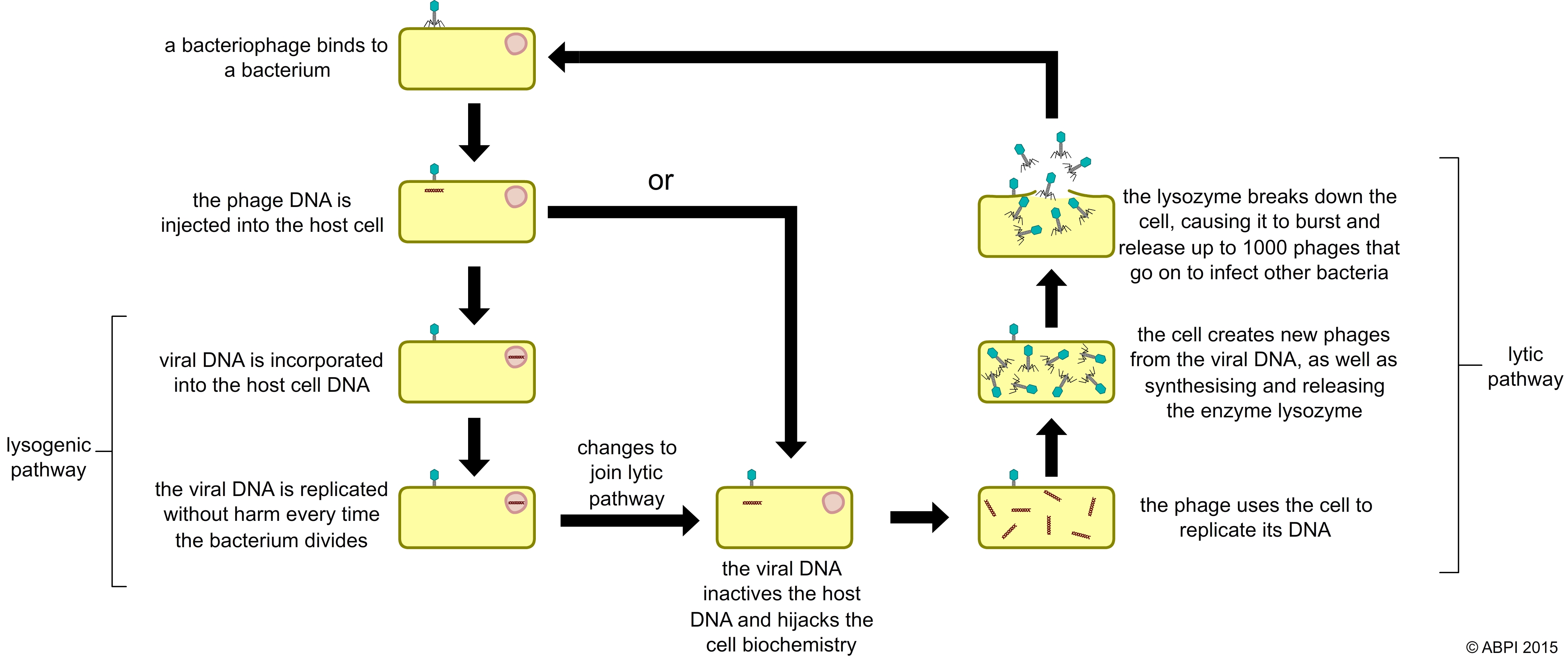This topic takes on average 45 minutes to read.
There are a number of interactive features in this resource:
 Human biology
Human biology
Viruses range in size from 0.02µm to 0.3µm across, about 50 times smaller than the average bacterium. They are the smallest microorganisms. Viruses are not cells but they are a combination of genetic material and protein that can invade living cells. The viruses take over the biochemistry of the cells they invade to make more viruses. Since viruses can only reproduce as parasites in the cells of other living organisms, most scientists class them as obligate intracellular parasites.
Viruses are usually geometric shaped and have similar basic structures.
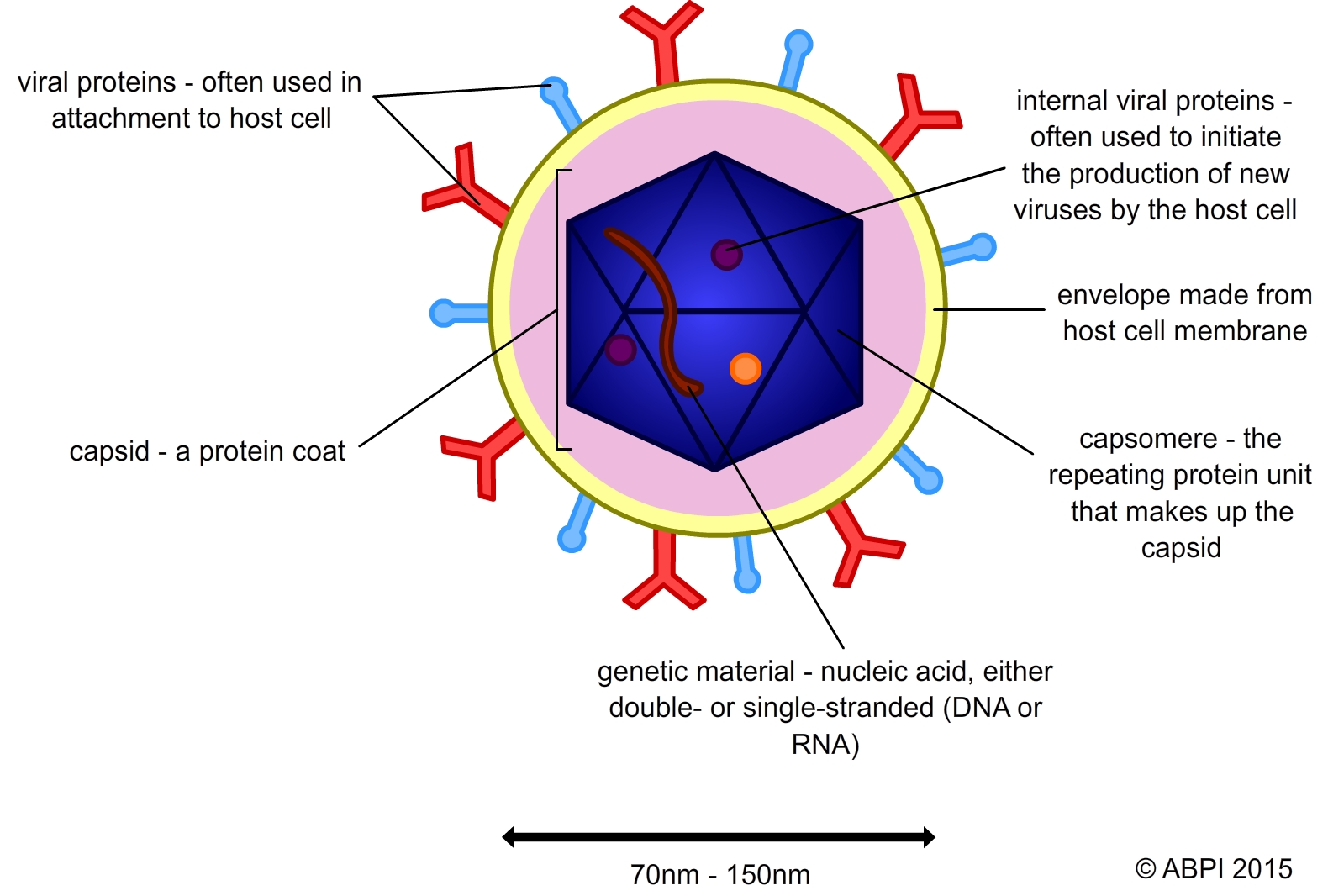
Generalised structure of a virus
Viruses are classified by their genome and their mode of replication.
| Type of virus | Genetic material | Mode of replication | Examples |
|---|---|---|---|
| DNA viruses | DNA | Viral DNA acts directly as a template for both new viral DNA and for the mRNAs needed to synthesise viral proteins | Adenoviruses that cause colds, bacteriophage that attack bacteria and varicella-zoster that causes chicken pox |
| RNA viruses | RNA | RNA acts as template for viral proteins either directly or indirectly | Influenza virus, measles virus and tobacco mosaic virus |
| Retroviruses | RNA | Viral RNA controls production of reverse transcriptase. This makes DNA molecules corresponding to the viral RNA. They are transcribed to produce new viral proteins and a new viral genome. | Human immunodeficiency virus (HIV) |
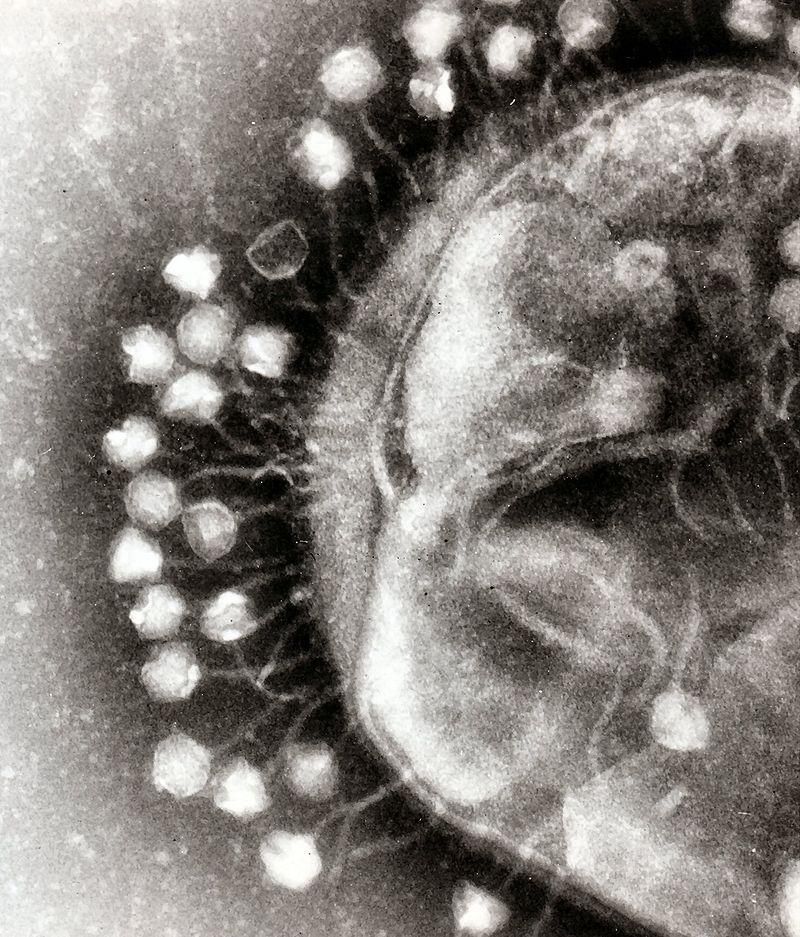 |
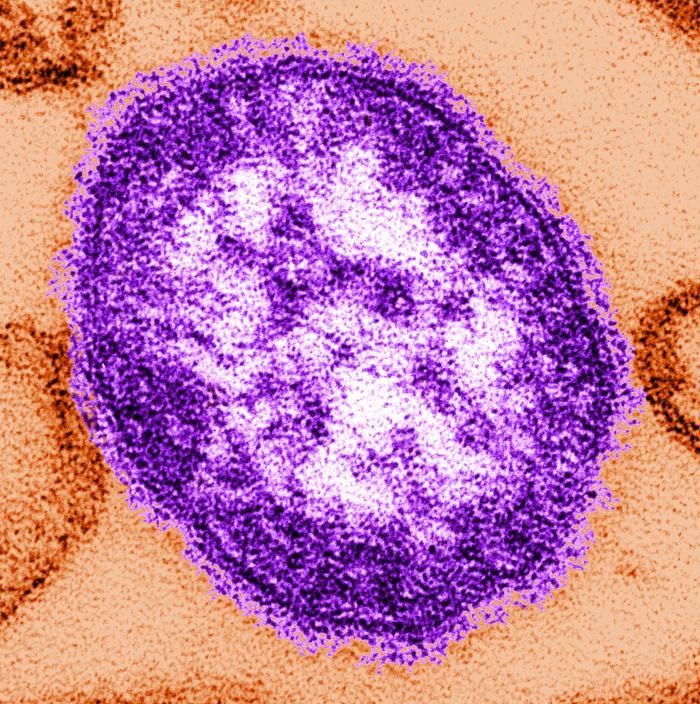 |
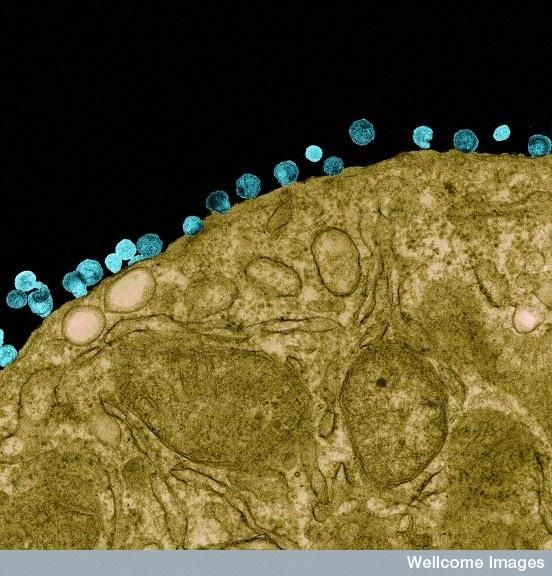 |
|
Bacteriophage is an example of a DNA virus. The capsid of a bacteriophage is 70-90nm of diameter. |
The measles virus is an RNA virus. Diameter of 120-250nm. |
The human immunodeficiency virus (HIV) is a retrovirus. Diameter around 100nm. |
As naturally occurring viruses invade and take over living cells to reproduce they all cause damage and disease of some sort. They can withstand drying and long periods of storage whilst maintaining their ability to infect cells.
How do viruses infect cells? They use several different methods:

Chickenpox is caused by a virus
(Photo credit: CDC/NCIRD)
The life cycle depends on the type of virus. DNA viruses may go into a lysogenic pathway, when they steadily reproduce with the cells, or a lytic pathway, when they become virulent and cause disease.
